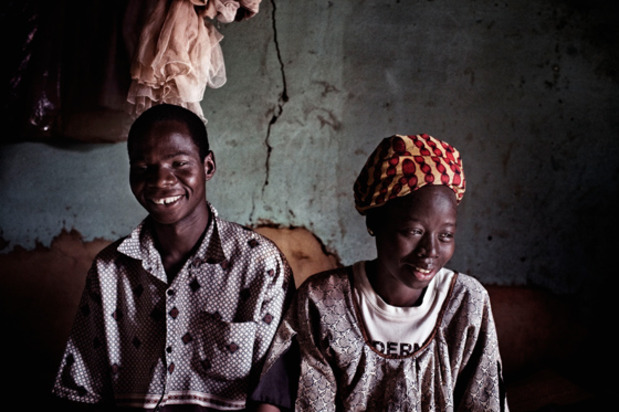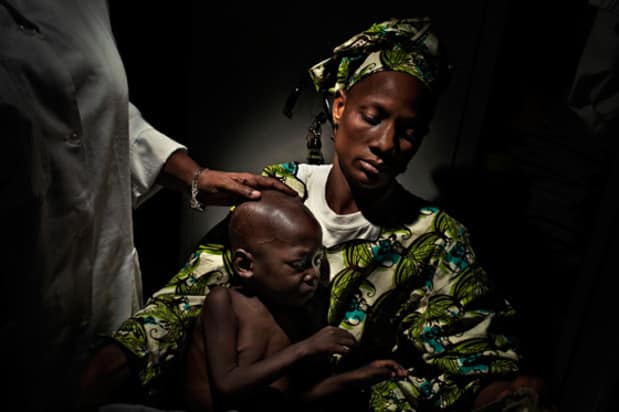Today is World AIDS Day, and to mark it we are showcasing Access to Life, a collaboration between Magnum Photos and the Global Fund—the organization that puts all of the money generated by (RED) to work on the ground in Africa and provides a quarter of all international financing for AIDS globally. For the project eight photographers portray thirty people in nine countries around the world before and four months after they began antiretroviral treatment for AIDS. See more photos and read more from Paolo Pelligrin's Mali section of the project after the jump.
In Mali, HIV is transmitted mainly through sexual contact, and about 1.7 percent of Mali’s population of more than 12 million is infected. The stigma surrounding AIDS is still strong, but a tradition of polygamous marriage adds to the challenge of preventing transmission.
Yet efforts to prevent and treat AIDS have expanded rapidly, and health centers are now able to provide free testing and treatment throughout the country.
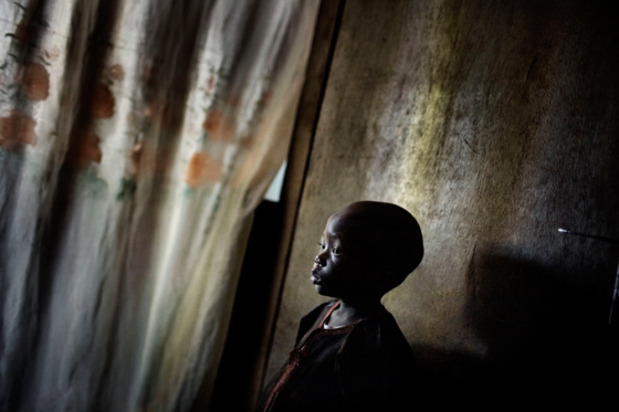
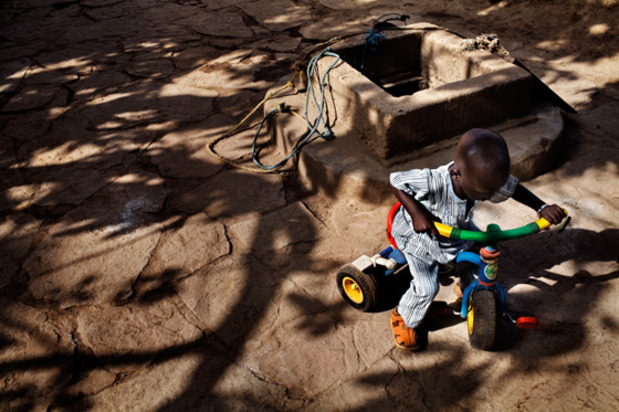 Mali, 2008. Kassi Keita, 3, had been sick for 18 months before being diagnosed HIV-positive. His mother, Mariam Dembélé, 31, is also being treated for AIDS.
Mali, 2008. Kassi Keita, 3, had been sick for 18 months before being diagnosed HIV-positive. His mother, Mariam Dembélé, 31, is also being treated for AIDS.
Of his work in Mali, Pelligrin says:
I wanted to be part of a Magnum collective project, and this is one I felt particularly close to, having initiated my own journey into photography with a story on AIDS in Uganda in the early ’90s.My generation was coming of age when HIV/AIDS exploded into a global epidemic. When I first started documenting AIDS, there was no cure, no hope. A positive diagnosis was equivalent to death. What I have seen in Mali is a giant leap forward, something that only a few years ago was unthinkable—a scenario that literally gives a population “access to life.” I wanted the opportunity to re-engage with this issue now that treatment is available.
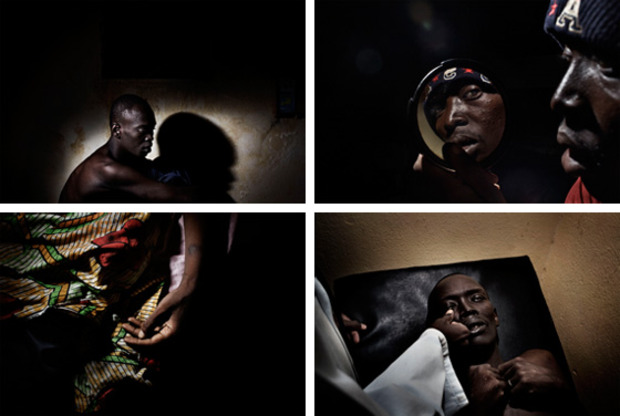 Mali, 2007. Ousmane Sow, who tested positive for HIV, but refused to believe it. He returned three months later for treatment, but it had become too late and he passed away.
Mali, 2007. Ousmane Sow, who tested positive for HIV, but refused to believe it. He returned three months later for treatment, but it had become too late and he passed away.
The social stigma against AIDS remains in every part of the world. The people we met in Mali were reluctant to be interviewed, photographed, or even to be seen with us. Instead, they requested that we meet in their homes, their private sphere, away from public view. Those spaces—the colors, the cracks in the walls, the pictures clinging to them—became an extension of the portraits I was trying to take, a testament to lives that had been forever altered. And in some way those dark interiors became a metaphor for the alienating force of the disease.Only four months later, I returned to the same homes. Two of the people I had photographed had not survived, as their treatment probably started too late and their basic life necessities were not met. But for the other six, a new chance at life was under way. They had once again become active members of their communities.
For me this project is ultimately about the strength and resilience of the human spirit – the desire to overcome even the most difficult circumstances and to embrace life, and a future, again.
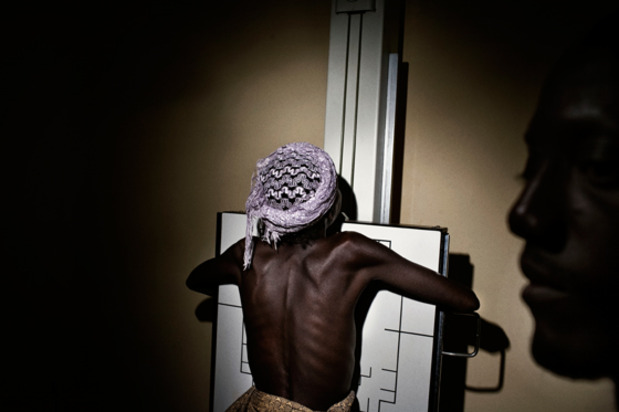
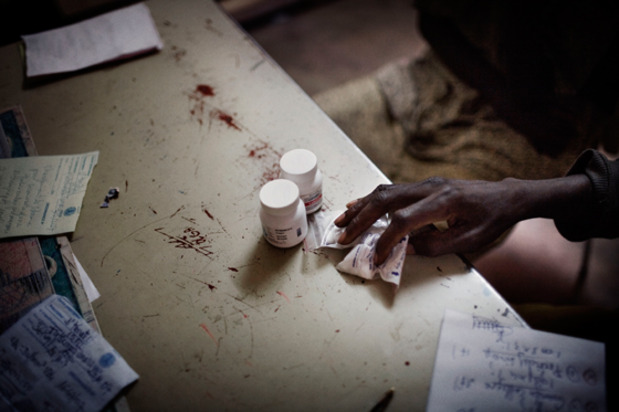 Mali, 2007. Massaman Keïta, 31, and Fatoumata CAMARA, 20, married five years ago, and made their living farming millet and cotton. Both HIV-positive, and too weak to work, they left their rural village for Bamako to be treated. Both, also seen below, have flourished with the ARV treatment.
Mali, 2007. Massaman Keïta, 31, and Fatoumata CAMARA, 20, married five years ago, and made their living farming millet and cotton. Both HIV-positive, and too weak to work, they left their rural village for Bamako to be treated. Both, also seen below, have flourished with the ARV treatment.
Case Study from Access to Life
Massaman Keïta, 31 and Fatoumata Camara, 20
Farmers
Massaman and Fatoumata, both from the Koulikoro region in western Mali, were married five years ago. They made their living farming millet and cotton. But Fatoumata became ill three years ago and stopped working a year later. Then Massaman, too, fell sick and had to stop working. In order to survive, they sold the few oxen they owned and then, too weak to work but not yet knowing the cause of their illness, they left their rural village of Kara, located 50 kilometers from the capital of Bamako, to be treated.
Tough Massaman was initially not keen to be tested for HIV, after being counseled the couple tested together, and began ARV treatment at the same time. Since then they have lived with Fatoumata’s family, in a four-room house surrounded by mango trees. “We are the first case in our family,” says Massaman. “In our village, there are quite a lot of people who have it but they are hiding it, like we are.” Fatoumata has suffered more seriously from AIDS-related illnesses. “This is the most difficult period of my life,” Massaman said soon after starting the treatment. “My wife is very, very weak. All my efforts are focused on looking after my wife because I do not want to abandon her. And there is no one I can rely on.” In Mali, as in many countries, husbands often reject their HIV-positive wives, regardless of their own status, making this couple’s mutual support all the more extraordinary. Both have flourished with the ARV treatment. Massaman began making handicraft lamps to sell in neighboring markets, and Fatoumata is doing housework. “I feel like I was awakened from the dead,” Massaman says. “I never imagined that I could be how I am today.”
